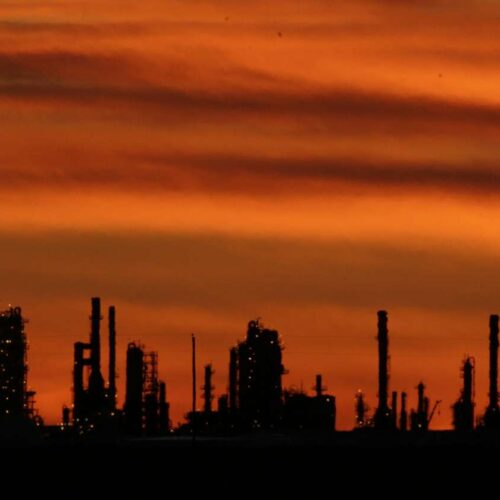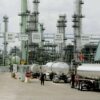Introduction
Koch Industries is lobbying to prevent tougher counter-terrorism standards for its facilities that use hazardous toxic chemicals. A terrorist attack or accident at Koch’s oil, chemical, paper and fertilizer plants, an iWatch News investigation revealed, could put tens of thousands of people and their homes, schools, hospitals, day care centers, factories and offices at risk.
Koch maintains that existing federal and state regulations are adequate to protect nearby residents.
Here is a list of the 10 Koch facilities, and the toxic chemicals they use, that put the most Americans in potential danger in the event of an accident or attack:
- The INVISTA plant in La Porte, Texas, is one of several facilities in Texas where Koch manufactures some 4 billion pounds of nylon intermediate chemicals a year, for use in the production of INVISTA products like Stainmaster carpet, Antron carpet fiber, Cordura fabric and Lycra spandex. Formaldehyde is stored at the site, in the Houston suburbs, and a spill and vaporization could threaten almost 1.9 million people who live nearby.
- Koch’s Georgia-Pacific paper plant in Camas, Wash., stands across the Columbia River from the Portland, Ore., airport. Because of its proximity to Portland, the plant puts 840,648 people in potential danger from a spill of chlorine dioxide, which is used at the facility to bleach pulp for paper towels and office paper.
- The aging Flint Hills Resources oil refinery in Corpus Christi, Texas, lies on the road to nearby Calallen, and exposes 349,862 people to a potential spill and vapor cloud of highly toxic hydrofluoric acid, which can damage skin, lungs and eyes and cause pain and vomiting.
- The Koch Nitrogen Wood River terminal in East Alton, Ill., lies across the Mississippi River from the metropolitan St. Louis area. In case of a spill and vaporization, the 60 million pounds of anhydrous ammonia stored at the plant could endanger 290,000 people.
- Georgia-Pacific’s Port Hudson facility is located in Zachary, La., north of Baton Rouge. The chlorine used in the manufacture of paper towels and other Koch products could endanger 230,263 nearby residents.
- To make the Quilted Northern toilet paper and Brawny paper towels manufactured at the aging Georgia-Pacific facility in Palatka, Fla., Koch uses chlorine dioxide. A spill and resultant chlorine gas cloud could threaten the safety of 140,000 people.
- Georgia-Pacific’s Leaf River plant in New Augusta, Miss., is located southeast of Hattiesburg. The chlorine used in this pulp plant could endanger 123,340 nearby residents.
- The INVISTA plant in Victoria, Texas, is located between San Antonio and the Gulf of Mexico, to the north of Corpus Christi. Like its counterpart in La Porte, Texas this facility makes nylon based products, but the threat here is anhydrous ammonia which, in a vapor cloud, could threaten 106,558 people.
- Georgia-Pacific’s Brunswick, Ga., pulp mill is at the outskirts of this coastal town, not far from the resorts of Sea Island and Jekyll Island. Chlorine dioxide is used for bleaching pulp, putting 90,000 nearby residents in potential danger.
- Koch Nitrogen’s Taft Terminal is on the Mississippi River, upstream from New Orleans. It stores anhydrous ammonia used in the manufacture of fertilizer. A spill and vapor cloud could endanger 81,210 nearby residents.
(A full list of all 56 Koch plants is here.)
Read more in Environment
Environment
State officials ignored scientists in approving pesticide
Calif. pesticides manufacturer finds warnings from scientists too ‘excessive’ to be credible
Environment
Risk to nuclear plants in hurricane’s path may not be what you think
Industry watchdogs concerned about power supplies – to reactors, not just homes



Join the conversation
Show Comments